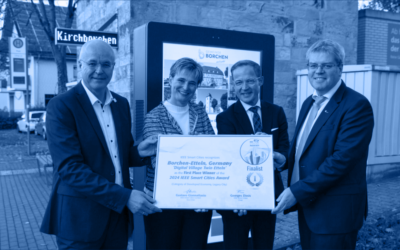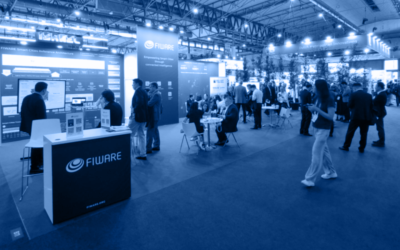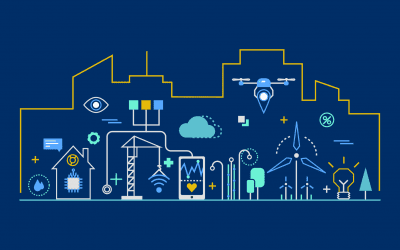According to its webpage, “Cyberlightning is the leading 3D Internet Company with next generation controlling and monitoring solutions for the Internet of Things (IoT) networks in the Smart City context. At the moment we are developing real world and virtual world integration for European Union’s service portfolio and also at the same time enabling IoT networks to be controllable via mobile devices..” Now, making use of some of the FIWARE Generic Enablers, Cyberlighning launches CyberVille 2.0, a platform that enhances smart-node to Cloud scalability and establishes the basis for self-learning industrial IoT networks.
This platform provides a “see it at a glance” view, advanced analytics and functional control of the complex sensor and machine networks that comprise the Internet of Everything (IoE). With the addition of powerful edge-device functionality and support for independent yet connected instances of the application, organizations can implement systems that learn from the collected data and operating inputs of smart nodes and various networks layers.
“This release of CyberVille marks an important step in evolving from connected, but highly centralized data systems to an architecture that is the basis of a neural network for the Internet of Everything,” said Ville Mickelsson, CEO of Cyberlightning. “Broadly distributed intelligence enables a system that learns as it grows. For example, a machine supplier can gather operating data across multiple installations and create a pool of real-time knowledge about operating and maintenance parameters to share with all customers.”
Which is the role of FIWARE in CyberVille?
CyberVille makes use of some of the following Advanced Web UI Generic enablers:
- GIS (Geographical Information System): It enables a robust backend for 3D map data. This GE is able to host geographical data and serve it in 3D form (where applicaple) to both mobile and web clients. The GE implementation is based on open source Geoserver project (GPL licenced) and W3DS extension.
- RVI (Real Virtual Interaction): It captures and stores sensor data and allows its easy usage in a web browser environment. A key aspect of Augmented Reality is that virtual content is not just presented embedded within the context of the real world, but that it should also allow users to interact actively with real objects and the objects to provide input to the user.
- 3D-UI: It allows the creation of WebGL based 3D user interfaces in a browser and the integration of interactive 3D graphics into a Web-based application.
Cyberlightning has extended these Generic Enablers to include specific features for their business. They have shared some of these changes in open source communities (they recommend us to learn more about the GeoServer project as an example).
Introduced in May 2014, the CyberVille® software platform integrates heterogeneous data and inputs from multiple control systems to create a unified view and control panel for complex networks that can be accessed on any client device, from smart phones and tablets to traditional desktops. Based on open-source, standards based Internet technology, it provides a multilayered 3D view of complex networks based on a combination of geographic information system (GIS) data sets and 3D models, along with all of the real time data feeds associated with the various objects that make up the network or networks under management.
About CyberLightning
CyberLightning provides an intelligent, end-to-end Internet of Everything (IoE) Application Platform for operational and business use in Smart City environments. The company was founded in 2010 by a core team at the Center for Internet Excellence at University of Oulu, Finland. CyberLightning is a member of the Industrial Internet Consortium (IIC), IPSO (Internet Protocol for Smart Objects) Alliance, Euroheat & Power and a Tizen Association partner. More information is available at www.cyberlightning.com



